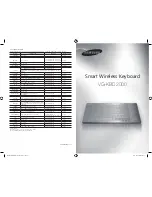
320
Troubleshooting
• Is there a Program Change at the point where the song
performance is sluggish?
Change the position of the Program Change. When Program
Changes are inserted in songs, processing time for switching
patches increases, which may then cause the performance to
become sluggish.
• Is there a System Exclusive message at the point where the song
performance is sluggish?
Move the location of the data. System Exclusive messages
contain large amounts of data, thus placing a heavy burden on
sequencers and sound modules. Try repositioning data and
changing System Exclusive messages to Control Changes for
any data for which Control Changes can be substituted.
• Is there an Aftertouch or other such large Control Change at the
point where the song performance is sluggish?
If the data is no longer needed, delete the data. In some cases,
when using a keyboard that features aftertouch to input data,
you may end up inputting huge amounts of data before
realizing this is happening. Such large amounts of data can
place an excessive load on your sequencer and sound module.
You can use the Phrase Modify operation Data Thin (p. 249) to
thin out unwanted messages.
No Sound from connected MIDI device.
Check the following points.
•
In Live/Studio Mode
*
Could the Keyboard Switch be turned off for the external part that is
transmitting data to your external MIDI device? (p. 135)
Exclusive messages are not received.
Check the following points.
• Is the instrument set to receive Exclusive messages?
Set the Rx Exclusive parameter to “ON” (p. 299).
• Does the Device ID number of the transmitting device match
the Device ID number of the Fantom-G?
Check the Device ID parameter (p. 299).
I connected an external sequencer or MIDI keyboard to the
MIDI IN connector, and attempted to play a Fantom-G rhythm
set, but there was no sound. Why?
Check to make sure that the MIDI Transmit channel of the
external MIDI device and the Fantom-G’s MIDI Receive channel
are matched.
When the Bend Range for a Patch is increased (48), the pitch
does not rise sufficiently, even when a MIDI Pitch Bend
message is received.
While Patch Bend Ranges can be set anywhere between 0 and
48, when certain Waves in which the pitch is raised (in the +
direction) are used, the pitch may stop rising at a fixed point,
rather than continuing to go up. Although a value of 12 is
ensured for the upper limit of raised pitches, use caution when
setting the Bend Range above this figure.
External input sound cannot be heard/volume is too low.
Check the following points.
• Could [MIX IN] be unlit?
Press [MIX IN] so it is lit.
• The level of the external input may be lowered.
When you sample, use the EXT SOURCE “VOLUME” knob to
adjust the level appropriately.
Hold down [SHIFT] and press [MIX IN] to access the Input
Setting screen, and check the Level settings.
• The volume of the device connected to AUDIO INPUT may be
lowered.
Adjust it to an appropriate level.
• Are the audio cables connected correctly?
Check the connections.
• An audio cable may be broken.
• Could you be using an audio cable with a built-in resistor?
Use a connection cable that does not contain a resistor (e.g.,
Roland PCS series).
External input sound is not stereo/is not monaural.
Check the following points.
• Stereo Switch parameter (p. 260) may be set to monaural.
• Hold down [SHIFT] and press [MIX IN] to access the Input
Setting screen. Could the Input Select parameter be set to “LINE
IN L,” or “Microphone”?
Mic sound is not output/is too weak.
Check the following points.
• Is the mic cable connected correctly?
Check the connection.
• The mic cable may be broken.
• The input source may be set to something other than mic.
Hold down [SHIFT] and press [MIX IN] to access the Input
Setting screen, and set “Input Select” to “Microphone.”
• The mic level may have been lowered.
When sampling, use the EXT SOURCE “LEVEL” knob to adjust
the level appropriately.
Issues Related to MIDI and
External Devices
Issues Related to Sampling
Fantom-G_r_e.book 320 ページ 2009年7月2日 木曜日 午後2時55分
















































